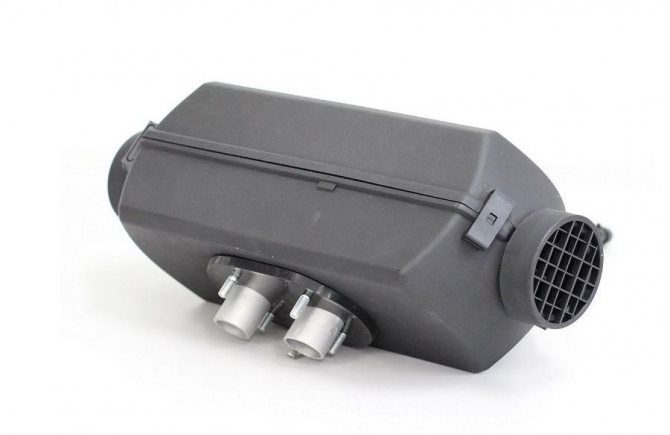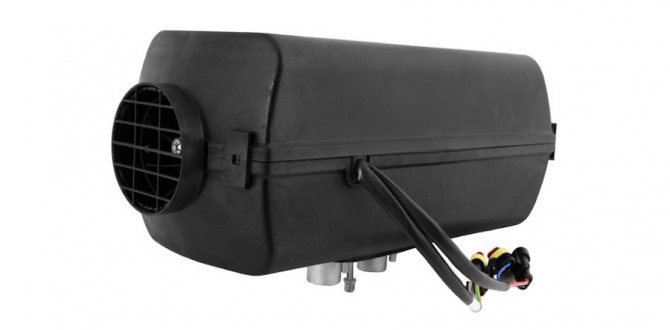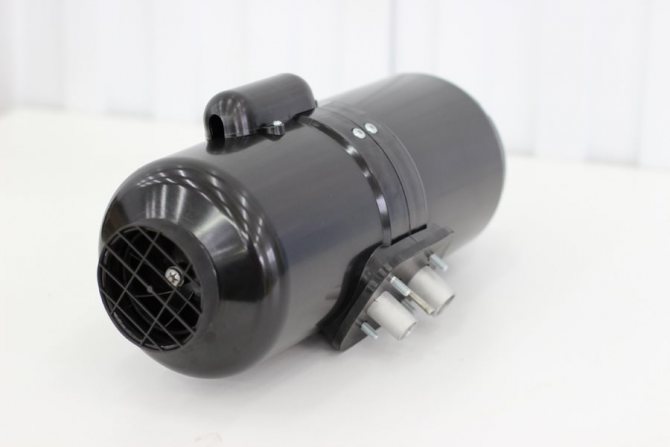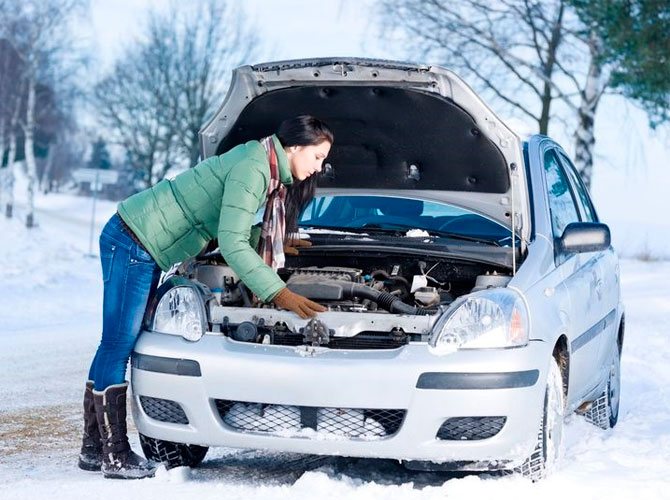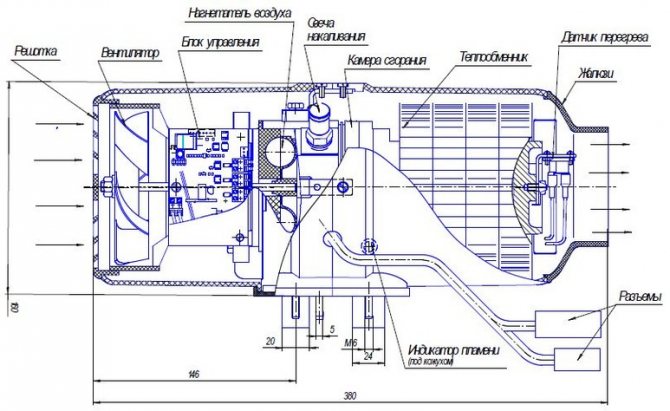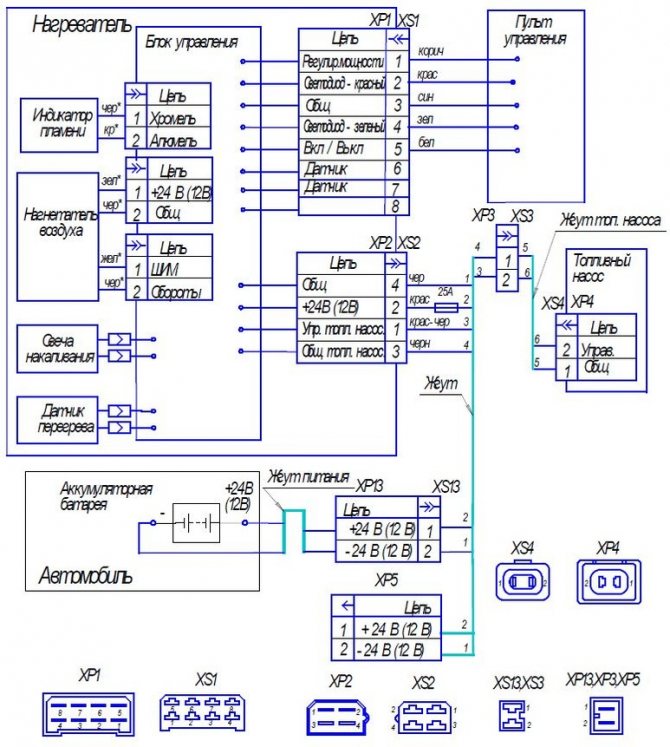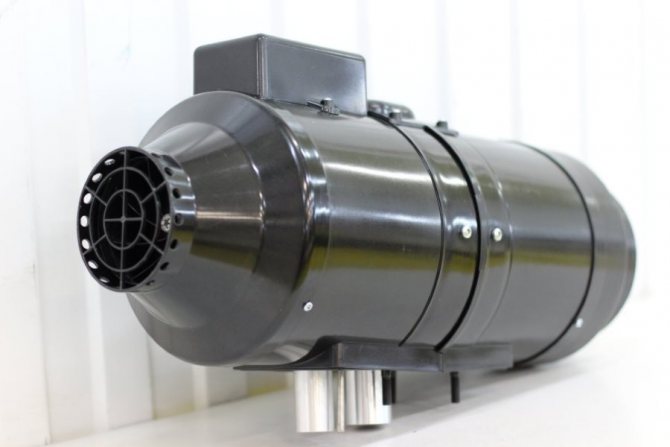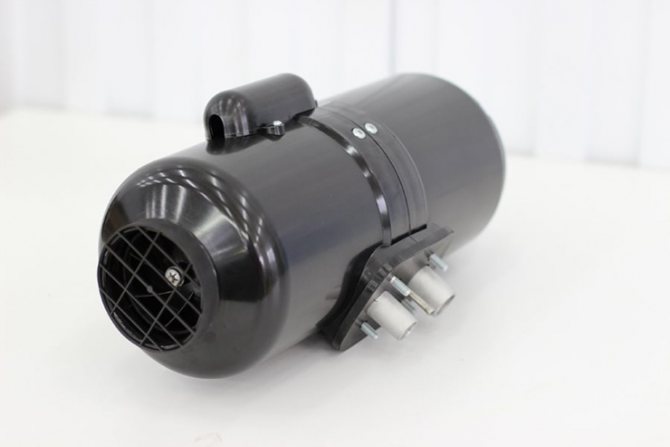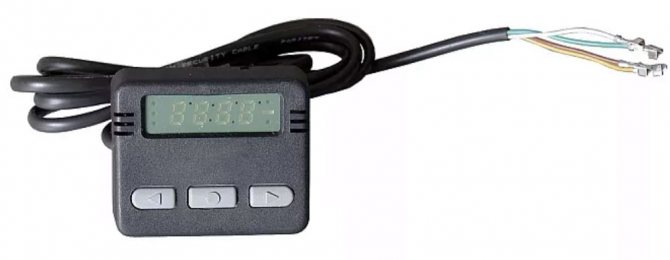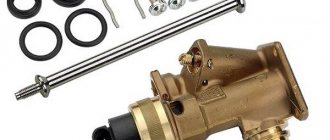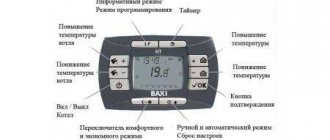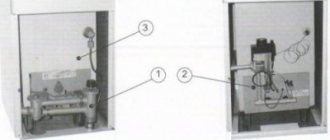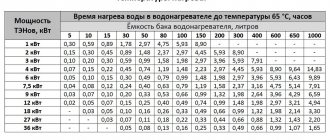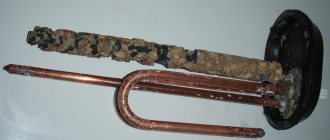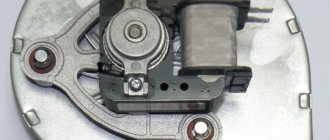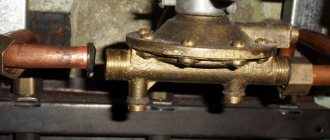The planar is an autonomous heater that was invented by Samara specialists. The lineup includes 4 types of devices, each designed in 12 and 24 volt versions. The design is designed to provide a comfortable temperature for a person in the cab of any vehicle, even in severe frosts. But she, like any installation, can fail. Knowing the Planar fault codes, you can start repairing.
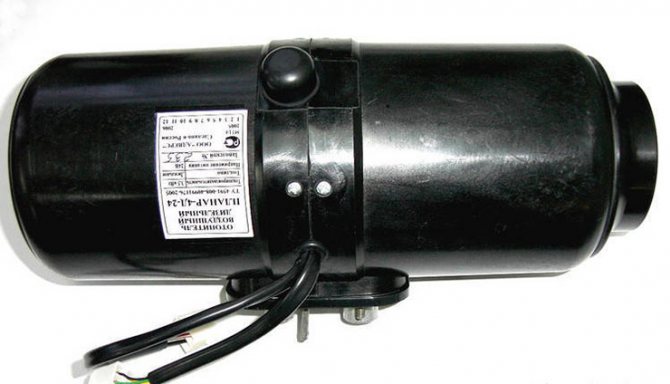
First you need to study the codes of this device.
The principle of operation and features of the Planar heater
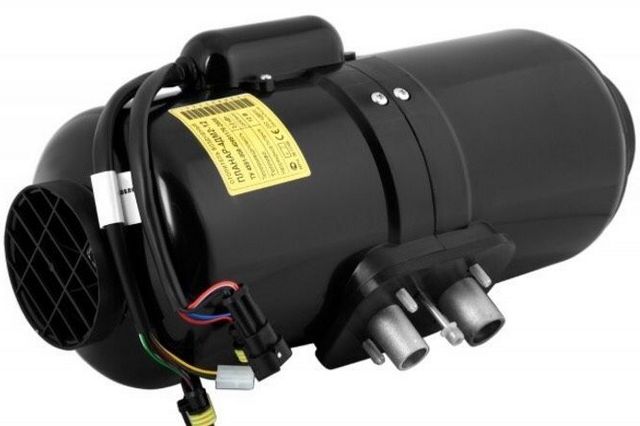

The Planar heater runs on its own fuel according to the convection principle
The Planar heater is a product of Russian and Teplostar. The principle of operation is simple: the device draws in air, warms up and returns it back to the passenger compartment. The device uses its own diesel fuel for heating - its operation does not depend on the engine of the car. For the device to function, it must be connected to a 12 or 24 V DC network.
The design is simple:
- All elements are located in a cylindrical or box-shaped body.
- Diesel fuel is taken through a tube from the tank of a diesel vehicle or a special heating tank. The pump supplies fuel.
- The diesel fuel flows through the pipe to the nozzle of the combustion chamber. The glow plug is located here. Diesel fuel burns in the chamber.
- Diesel fuel requires air to burn. The supply is carried out through a flexible hose connected to the inlet pipe. Air is forced by means of a fan.
- The gas obtained during combustion leaves through the chambers and gives off heat through the heat exchanger to the main air masses. Smoke is discharged through the air vent hose outside the passenger compartment.
- An electrically driven fan circulates air. First, it cools the electric motor and heats up from it. Then it passes through the heat exchanger and its temperature increases even more. Warm air is supplied to the passenger compartment.
- The commutation of the blocks is performed by a loop with decks-connectors. Their shape is such that it excludes erroneous connection. Adjust the functions of the device using a remote control or other modification.
- The safety of the heater is ensured by a number of sensors and monitoring devices. The indicator monitors the flame in the combustion chamber, the temperature sensor measures the temperature of the air leaving the device, and so on.
The operation of the device can be controlled by the remote control or by means of the regulator directly on the body. The heater functions automatically: when the temperature in the passenger compartment reaches the set value, the Planar turns off, when it falls, it turns on.
Planar 4DM-12/24, Planar 4DM2-12 / 24
| The code | Flashing | Malfunction | Trouble-shooting |
| 13 | 2 | Heater does not start Two automatic start attempts have been exhausted. There is no fuel in the tank. The fuel grade does not correspond to the operating conditions at low temperatures. Insufficient amount of fuel supplied. Clogged gas outlet pipe or air intake. Insufficient heating of the spark plug, malfunction of the control unit. The impeller touches the volute in the air blower and, as a result, the air supply to the combustion chamber decreases. The hole Ø 2.8 mm in the spark plug connection of the combustion chamber is clogged. The spark plug screen is clogged or not installed all the way in the combustion chamber. | Pour fuel into the tank. Change fuel. Eliminate the fuel line leaks. Check the fuel pump for performance, replace if necessary. Clean the air intake and flue gas pipe from possible blockages. Check spark plug, replace if necessary. Check the voltage supplied by the control unit, replace the control unit if necessary. Replace the air blower after determining if it is faulty. Clean hole Ø 2.8 mm. Replace the mesh if necessary and install it according to point. |
| 20 | The heater does not start. There is no communication between the control panel and the control unit. | Check connecting wires, connectors. Remove oxidation from connector contacts. Check control panel, replace if necessary. | |
| 01 | 1 | Overheat. The overheating sensor generates a signal to turn off the heater. The temperature of the heat exchanger in the sensor area is more than 250 ° C. | Check the heater inlet and outlet for free air passage through the heater. Check the integrity of the fan and its operation. Check overheating sensor, replace if necessary. Check the heat exchanger (whether all radiator halves are attached to the heat exchanger body). Check and, if necessary, remove carbon deposits from the inside of the heat exchanger |
| 08 | 3 | Flame interruption. Fuel line leaks. Defective fuel pump. Defective flame indicator. | Check the tightness of the fuel lines, tighten the clamps on the fuel lines. Check air intake and flue gas pipe. Check the amount and flow of fuel by the fuel pump and replace if necessary. If the heater starts, check the flame indicator and replace if necessary. |
| 09 | 4 | Glow plug malfunction. Short circuit, open circuit, malfunction of the control unit. | Check the glow plug, replace if necessary. Check control unit, replace if necessary. |
| 05 | 5 | Defective flame indicator. Short circuit to the case or open circuit in the wiring of the indicator. | Check flame indicator according to point, replace if necessary. |
| 04 | 6 | Malfunction of the temperature sensor in the control unit. The temperature sensor is out of order (located in the control unit, cannot be replaced). | Replace control unit. |
| 17 | 7 | Defective fuel pump. Short circuit or open circuit in the wiring of the fuel pump. | Check fuel pump wiring for short circuit and open circuit. Check the wires going to the overheating sensor for insulation integrity. |
| 12 | 9 | Shutdown, overvoltage more than 30 V (16 V for 12 V heater). Vehicle voltage regulator defective. The battery is defective. | Check the terminals on the battery and the supply wiring. Check the battery, recharge or replace if necessary. Check the operation of the car voltage regulator, repair or replace if necessary. |
| 15 | 9 | Shutdown, undervoltage less than 20 V (10 for 12 V heater). Vehicle voltage regulator defective. The battery is defective. | Check the terminals on the battery and the supply wiring. Check the battery, recharge or replace if necessary. Check the operation of the car voltage regulator, repair or replace if necessary. |
| 10 | 11 | The blower motor is not picking up the required speed. Increased friction in the bearings or the impeller touching the volute in the air blower. Motor malfunction. | Check the electric motor, replace the air blower if necessary. |
| 16 | 10 | The ventilation is insufficient to cool the combustion chamber and the heater heat exchanger. The flame indicator in the heater has not cooled sufficiently during the purge time. Control box defective. Defective flame indicator. Air blower defective. | Check the air intake and flue gas pipe, if necessary clean of dust and dirt.Check the heater inlet and outlet for free air passage through the heater. Check flame indicator and replace if necessary. Check or replace control unit. Check the operation of the air blower, replace if necessary. |
| 27 | 11 | The engine does not rotate. Jammed due to the destruction of the bearing, magnetoplast (rotor) or the ingress of foreign objects, etc. | |
| 28 | 11 | The engine rotates by itself and cannot be controlled. Defective motor control board or control unit. | |
| 02 | 12 | Possible overheating according to the temperature sensor. The temperature of the sensor (control unit) is more than 55 degrees. During the purging time before start-up, the control unit is insufficiently cooled within 5 minutes or overheating of the control unit that occurred during operation. | It is necessary to check the inlet and outlet pipes of the heater for free air inlet and outlet and repeat the start to cool the heater. |
Advantages and disadvantages
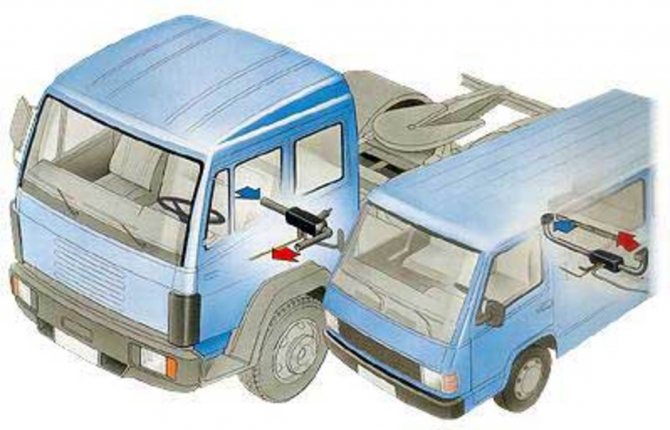

The device can work autonomously when the engine of the machine is turned off
The Planar heater helps out many drivers. Truckers, bus drivers, travelers have to spend a lot of time in the cab of the car. In the cold season, the heating of the passenger compartment due to the operation of the engine is insufficient. Planar solves this problem.
Advantages of the device:
- In an hour, the heater, depending on its power, heats from 34 to 120 cubic meters. m. of air.
- The planar is economical - with such a high efficiency it consumes no more than 29-42 watts. The same volume of heated air requires 0.24 to 0.37 liters of diesel fuel per hour.
- The planar is effective at very low temperatures overboard - below -20 C.
- The installation works without time limits. It turns off automatically when the specified temperature is reached and turns on when it drops. You can turn off the device manually.
- The device is safe. In the event of a rollover, low flame, extinction of the flame, interruptions in the supply of air or fuel, the Planar switches off.
- The noise level is low.
- If you connect the air outlet pipes, warm air can be directed not only into the cabin, but also into the passenger compartment of the bus or into the cargo compartment if the cargo being transported needs a certain temperature regime.
- The device works autonomously from the car engine. This is a convenient option for spending the night in a car, as the Planar can heat the cabin all night.
There are no disadvantages. Autonomous car heater Planar fully meets its purpose.
The heater is used not only in cars, but also for heating change houses, vans, booths, tents.
The principle of operation and features of the device
One of the advantages of a planar heater is the ability to adjust the heating power. For this, the device has a special knob on the regulator, which can be easily turned and set to the desired position.
Having set the desired power value, there is no need to interfere with the further operation of the device. It will be monitored automatically:
- When the temperature drops to a critical minimum mark - Planar turns on
- A constant increase in heat inside the passenger compartment will gradually reduce power, reducing the supply of warm air
Package contents and characteristics
The complete set of the heater includes all units and parts of the device. The number and type of additional elements depends on the model. All fasteners are mandatory - washers, bolts, clamps, corners with gaskets, plugs, screens, and also all connecting elements - power harness, fuel pump, exhaust pipe. The planar is equipped with its own fuel tank and control panel.
There are 4 types of device. The main characteristics are shown in the table.
| Model | 2D-12-S (24 S) | 4DM2-12-S (24 S) | 44D-12-GP-S (24 S) | 8M-12-S (24 S) |
| Rated voltage, V | 12 (24) | 12 (24) | 12 (24) | 12 (24) |
| Thermal power, kW (max and min) | 0,8–2,0 | 1,0–3,0 | 1,0–4,0 | 2,0–6,0 |
| Fuel consumption, l / h (max and min) | 0,1–0,24 | 0,12–0,37 | 0,12–0,51 | 0,42– 0,76 |
| Power consumption, W (maxi and min) | 10–29 | 9–38 | 10–58 | 8–85 |
| The volume of heated air, cubic meters m / hour (max min) | 34–75 | 70–120 | 70–120 | 70–175 |
| Start and stop mode | Manual / Remote | Manual | Manual / Remote | Manual |
| Weight, kg | 10 | 10 | 10 | 12 |
Air heater Planar 4DM2 24 differs from 12 only in requirements for current strength - 24 V, not 12 V.
All Planar models run on diesel fuel. If the supply is carried out from its own tank, the diesel fuel is diluted with kerosene in certain proportions. The ratio depends on the type of diesel fuel and temperature.
Features of the automation of Planar devices
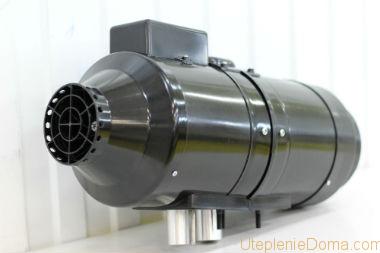

The heater switches off automatically when the voltage drops.
There are some nuances when working with equipment. During non-standard situations and accidents, the device can behave in one of the following ways:
- if for any reason the device is not started the first time, the automation software will restart the equipment (the system will shut down after the second unsuccessful attempt is completed);
- if after starting the device during its operation, combustion stops, then Planar 4d24 45 and any other model will turn off;
- if overheating of the heat exchanger of an autonomous device is observed, the device will be turned off automatically (this can happen in cases when one or both of the heater holes are in the closed position);
- the heater will turn off when the mains voltage drops below 20.5 or rises above 30 V.
The latter feature is not typical for all models. So, the Planar installation, operating from a 12 V network, will turn off when the power goes out of the range of 10.5-16 V. It is important to know that an emergency shutdown is accompanied by light signals. The controller has indicators with LEDs, which in an emergency situation will flash red or orange. Blinking occurs at regular intervals to indicate the type of problem. Interesting article: "Heater for the bathroom: wall, ceiling, floor".
Instructions on how to make water heating with your own hands with a video will help you avoid the most common mistakes.
Read about how effective heating a frame house with convectors is here.
Monitoring and control system
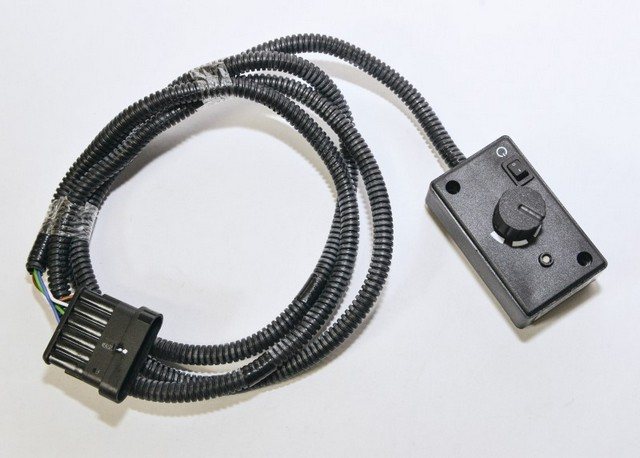

The control unit can be used to regulate the amount of heat
The Planar heater operates in several modes. Operational safety, regulation and diagnostics of systems are provided by sensors and a control unit.
Control block
The module is located in the housing and connected to the executive blocks with commutation loops. Its functions are as follows:
- turning on and off the device;
- control and management of the fuel combustion process;
- initial diagnostics in case of breakdowns during start-up;
- automatic ventilation after stopping the Planar;
- emergency shutdown in the event of a breakdown of any unit, flame attenuation, power surges, heat exchanger overheating and other situations.
The control unit works together with the remote control.
Modes of operation
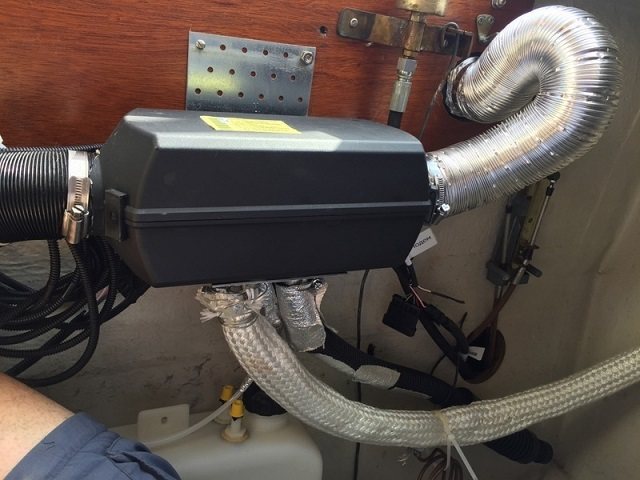

The device simultaneously performs the function of interior ventilation
The autonomous engine air heater operates in 3 modes. However, the use often depends on the configuration of the model:
- By power - heats up the interior as quickly as possible. The heater, set to a certain power level - from 1 to 8, works continuously until the device is turned off manually.
- By temperature - the heater heats up the air to the set temperature. Then the heater is switched off and automatically switched on again as soon as the air cools down to the specified minimum. In automatic mode, the device operates until it is manually turned off.
- Ventilation - provides air exchange. Combines with temperature or power control. At the same time, the temperature is maintained with high accuracy, does not fluctuate within the specified range.
The temperature and power are set before starting. Parameters cannot be adjusted during operation.
Control panels
The remote control is installed on the dashboard or hung on a container in any place convenient for the driver. The device is connected to the device by a loop. The console is convenient in that it regulates the work of the Planar and serves as a diagnostic tool.
Heaters are equipped with different types of remote controls:
- PU-10M - allows the Planar to operate in power and temperature modes, ventilation is not provided. Equipped with LED indicator.
- PU-5 - allows the Planar to work in all modes. The potentiometer handwheel is equipped with a conventional graduation, so that the temperature can be set more accurately. The indicator indicates work and malfunctions.
- PU-22 - functional buttons allow you to select a mode, a temperature sensor, the readings of which will be considered control, change the power and temperature indicators. Information about the work of the Planar and breakdowns is reflected on the LED screen.
By the number, color and behavior of the LEDs, you can determine the cause of the malfunction and quickly eliminate it.
Planar 4D-12/24, Planar 8D-12/24
| The code | Flashing | Malfunction | Recommendations for elimination |
| 01 | 1 | Overheating of the heat exchanger. | Check the inlet and outlet pipes of the heater for free inlet and outlet of heated air. Check the overheating sensor on the heat exchanger, replace if necessary. |
| 13 | 2 | Start attempts have been exhausted. | If the permissible number of start attempts has been used, check the amount and supply of fuel. Check the combustion air supply and flue gas line. |
| 08 | 3 | Flame interruption. | Check the amount and supply of fuel. Check the combustion air supply and flue gas line. If the heater starts, check the flame indicator and replace if necessary. |
| 09 | 4 | Glow plug malfunction. | Check the glow plug, replace if necessary. |
| 05 | 5 | Defective flame indicator. | Check the flame indicator circuit for an open, with the resistance between the terminals not exceeding 1 ohm. If the indicator is defective, then it must be replaced. |
| 6 | Temperature sensor (on the control unit). | Replace control unit. | |
| 17 | 7 | Defective fuel pump. | Check the fuel pump wiring for a short circuit, replace if necessary. |
| 20 | 8 | There is no communication between the control panel and the control unit. | Check connecting wires, connectors. |
| 12 | 9 | Shutdown, overvoltage. Shutdown, undervoltage. | Check the battery, voltage regulator and power supply wiring. The voltage between 1 and 2 pins of the XP13 connector must not exceed 30 V (15 V). Check the battery, voltage regulator and power supply wiring. The voltage between 1 and 2 pins of the XP13 connector must be at least 21.6 V (10.8 V). |
| 16 | 10 | The ventilation time has been exceeded. | The heater is not cooled sufficiently during the purge. Check combustion air system and flue gas line. Check flame indicator and replace if necessary. |
| 10 | 11 | Air blower motor malfunction. | Check the wiring of the blower motor; replace the blower if necessary. |
| 12 | Overheating inside the heater in the control unit area (temperature above 55 ° C) | During the purging time before start-up, the control unit is insufficiently cooled within 5 minutes or overheating of the control unit that occurred during operation. It is necessary to check the inlet and outlet pipes of the heater for free air inlet and outlet and repeat the start to cool the heater. |
Installation requirements
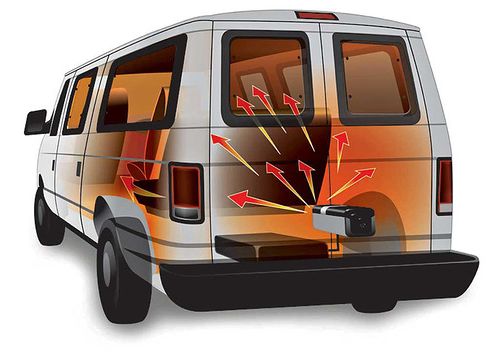

The device can be placed anywhere in the car, the control panel is next to the driver
Installation of the Planar is carried out strictly according to the instructions:
- The heater can be mounted both on the wall and on the floor.The position is strictly horizontal, tilt is prohibited.
- The distance from the walls or partitions to the inlet is at least 5 cm.
- The distance from the walls of the cabin from the outlet is at least 15 cm.
- The heater is installed in a place where it can be repaired and dismantled.
- The body must not come into contact with the walls or the floor of the cab.
- The fuel tank must not be installed in the passenger compartment, trunk or engine compartment. It is fixed in such a way that when the diesel fuel spills, it does not end up on the wiring.
- Combustion air is taken from outside, not from the passenger compartment or cargo hold. The suction port of the pipe is positioned against the airflow while driving.
Place the inlet so that the Planar does not suck in exhaust gases during operation.
What is an autonomous heater "Planar"
Autonomous heater "Planar" - an autonomous heater that allows you to heat the passenger compartment and maintain the set temperature regardless of the operation of the car heating system. Such a heater allows you to solve the problems of operating cars and premises in harsh winter conditions.
Standalone heaters of the Planar brand are a product of domestic manufacturers of automotive components. The heater was jointly developed by Adverse. The first generation "Planar" was released in 1995, since that time the joint product of the two manufacturers has experienced many innovations and updates.
Formally, the "Planar" line is not a pre-heater, but an air heater for the engine and passenger compartment. Thanks to this, the products under the brand name "Planar" are expanding the scope of their use. Planar heaters can be used not only on cars, but also on trucks, special equipment, industrial units, etc. Planar heaters can also be used to heat rooms.
Therefore, according to their purpose, Planar heaters differ from imported pre-heaters. Planar will not raise the engine temperature to facilitate engine starting, but it will establish and maintain a comfortable temperature in the car interior.
Possible error codes and malfunctions
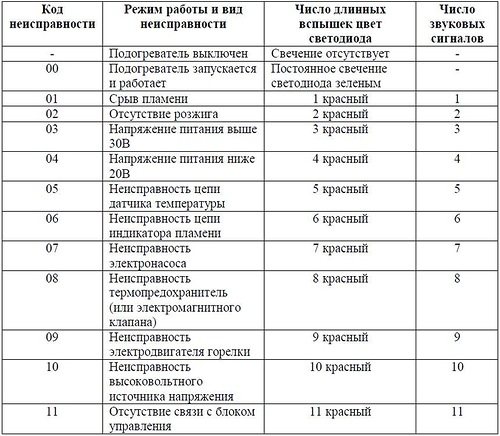

Planar heater error codes
The Planar display system signals errors. A number of breakdowns can be eliminated by yourself:
- 1 on the screen or blinking of the indicator - overheating of the heat exchanger. It is necessary to check the passage of air through the heater.
- 2 or 12 short blinks after a pause - overheating of the device itself. Check the pipes and the air supply to the combustion chamber.
- 12 or 15 or 9 fast flashes indicate power surges. The device turns off.
- 12 or 2 blinks - starting is impossible due to lack of fuel, air, disturbance in the exhaust gas outlet.
- 20 or 30 and 8 blinks - communication is lost between the module and the control panel. Check the loops.
- 29 or 3 blinks of the LED - flameout in the burner. You need to check the fuel supply.
- 35 or 13 blinks is an 8DM only bug. Flame blowout due to low voltage.
- 78 - marked only on the screen. This is a warning that flame blowout occurs too often.
Malfunctions indicated by the following codes cannot be remedied by yourself. Dismantling of the device and specialist intervention is required:
- 4 or 6 or 6 blinks - the temperature sensor is out of order.
- 5 or 5 blinks - the flame indicator is broken.
- 9 or 4 blinks - the problem is the glow plug.
- 10, 27, 28 or 11 flashes - the electric drive is damaged;
- 11 on the screen or 18 blinks - the temperature sensor on the supply pipe is broken.
- Problems on the inlet pipe are coded with 23 or 15 blinks.
- 17 or 7 flashes - fuel pump failure.
- The appearance of the digit 33 or 16 flashes after a pause indicates that the device is blocked, because overheating was registered three times in a row. Unlocking is carried out only at a service center.
- 36 or 20 blinks - the flame temperature sensor detects too high a temperature.
It is impossible to ignore the readings of the device. If errors of the same type are repeated, the device is blocked or fails.
Planar 2D-12/24, Planar 44D-12/24, Pranar 8DM-12/24
| The code | Malfunction | Recommendations for elimination |
| 01 | Overheating of the heat exchanger. The sensor generates a signal to turn off the heater. The temperature of the heat exchanger in the sensor area is more than 250 ° C. | Check the heater inlet and outlet for free air passage through the heater. Check the integrity of the fan and its operation. Check sensor, replace if necessary. Check heat exchanger. Check and, if necessary, remove carbon deposits from the inside of the heat exchanger. |
| 02 | Possible overheating according to the temperature sensor. The temperature of the sensor (control unit) is more than 55 degrees. During the purging time before start-up, the control unit is insufficiently cooled within 5 minutes or overheating of the control unit that occurred during operation. | It is necessary to check the inlet and outlet pipes of the heater for free air inlet and outlet and repeat the start to cool the heater. Replace control unit. |
| 05 | Sensor malfunction. Short circuit to the case or open circuit in the wiring of the sensor. | Check sensor, replace if necessary. |
| 04 or 06 * | Malfunction of the temperature sensor in the control unit. The temperature sensor is out of order (it is in the control unit and cannot be replaced). | Replace control unit. |
| 09 | Glow plug malfunction. Short circuit, open circuit, malfunction of the control unit. | Check the glow plug, replace if necessary. Check control unit, replace if necessary. |
| 10 | The air blower motor is not picking up the required speed. Increased friction in the bearings or the impeller touching the volute in the air blower. Motor malfunction. | Increased friction in the bearings or the impeller touching the volute in the air blower. Motor malfunction. |
| 12 | Shutdown, overvoltage more than 30 V (more than 16 V for a 12 V heater). Defective voltage regulator. The battery is defective. | Check the terminals on the battery and the supply wiring. Check the battery, recharge or replace if necessary. Check the operation of the car voltage regulator, repair or replace if necessary. |
| 15 | Shutdown, undervoltage less than 20 V (less than 10 V for a 12 V heater). Defective voltage regulator. The battery is defective. | See error code 12. |
| 13 | Heater does not start Two automatic start attempts have been exhausted. There is no fuel in the tank. The fuel grade does not correspond to the operating conditions at low temperatures. Insufficient amount of fuel supplied. Clogged gas outlet pipe or air intake. Insufficient heating of the spark plug, malfunction of the control unit. The impeller touches the volute in the air blower and, as a result, the air supply to the combustion chamber decreases. The Ø 2.8 mm hole in the combustion chamber is clogged. The spark plug mesh is clogged or not installed to the stop in the combustion chamber fitting. | Pour fuel into the tank. Change fuel. Eliminate the fuel line leaks. Check the fuel pump for performance, replace if necessary. Clean the air intake and gas outlet pipe from possible clogging. Check spark plug, replace if necessary. Check the voltage supplied by the control unit, replace if necessary. (The voltage must be at least 12 V). Replace the air blower after determining if it is faulty. Clean hole Ø 2.8 mm. Replace the mesh if necessary. |
| 16 | During the purging time, the sensor has not cooled down. The temperature sensor has not cooled sufficiently during the purge time before start-up within 5 minutes. | The temperature sensor has not cooled sufficiently during the purge time before start-up within 5 minutes. |
| 17 | Defective fuel pump. Short circuit or open circuit in the wiring of the fuel pump. | Check fuel pump wiring for short circuit and open circuit. Check the wires going to the overheating sensor for insulation integrity. |
| 20 | The heater does not start. Blown fuses in the power harness. There is no communication between the control panel and the control unit. The control panel is not receiving data from the control unit. | Check fuses, replace if necessary. Check the connectors and the green wire in the jumper harness. Remove oxidation from connector contacts. Check control panel and adapter harness, replace if necessary. If the remote control works, then the control unit must be replaced. |
| 27 | The engine does not rotate. Jammed due to the destruction of the bearing, magnetoplast (rotor) or the ingress of foreign objects, etc. etc. | Check connectors and harnesses going to the motor board and control unit. Eliminate malfunctions if possible. |
| 28 | The motor rotates at a constant speed, i.e. it cannot be controlled. Defective motor control board or control unit. | Replace air blower. |
| 08 or 29 * | Flame interruption during heater operation. Fuel line leaks. Defective fuel pump. Defective flame indicator. | Check the tightness of the fuel lines, tighten the clamps on the fuel lines. Check air intake and flue gas pipe. Check the amount and flow of fuel by the fuel pump and replace if necessary. If the heater starts, check the sensor and replace if necessary. |
| 30 | The heater does not start. There is no communication between the control panel and the control unit. The control unit does not receive data from the control panel. | Check the connectors and the white wire in the jumper harness. Remove oxidation from connector contacts. Check control panel and adapter harness, replace if necessary. If the remote control works, then the control unit must be replaced. |
| 78 | Fixed flame blowout during operation. Air in the fuel system. Defective fuel pump. Defective flame indicator. | Check the tightness of the fuel lines, tighten the clamps on the fuel lines. Check air intake and flue gas pipe. |
* - new malfunction code
Operating instructions for the heater Planar
You can install and run Planar yourself, but if you have no experience with heating systems, you need to invite a specialist.
When switched on, the Planar conducts testing, and if all elements are in good working order, it starts firing up. First, the chamber is purged, then diesel fuel and air are supplied. The burner works until the sensor fixes the set value. After that, the device turns off if it does not work in power mode.
After manual shutdown, the Planar is automatically ventilated.
Safety engineering
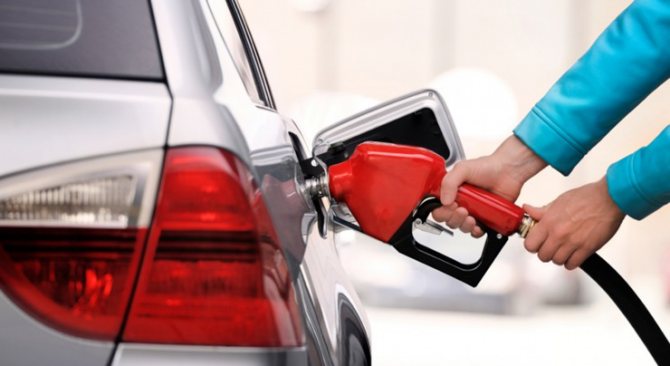

When refueling, the Planar must be turned off.
A cockpit or car salon is a very small space. Safety precautions must be strictly observed:
- there must be a fire extinguisher in the car, in a change house or garage - at least a bucket of sand;
- it is prohibited to lay the fuel line inside the passenger compartment or cabin;
- during refueling, the device is turned off;
- during repair and welding work, the heater is disconnected from the battery;
- before the end of the purge, it is prohibited to disconnect the device from the mains;
- after stopping the device, restarting is performed not earlier than after 5-10 seconds.
If the safety rules are not followed, the manufacturer has the right to refuse warranty service.
Design and principle of operation
The heater has a voltage regulator and a timer. Continuous work in stand-alone mode is possible.The ignition is started by electronics only if all the requirements are met and the components are in full serviceability, so there is no reason to worry about the safety of the structure.
The main components of the Planar:
- Power Supply;
- heating element;
- pump for pumping fuel.
The principle of autonomous operation is to supply air from the outside to the heating compartment. This air heats up the energy that is generated by the combustion of the fuel. Thereafter warm air enters the car interior, van or bus.
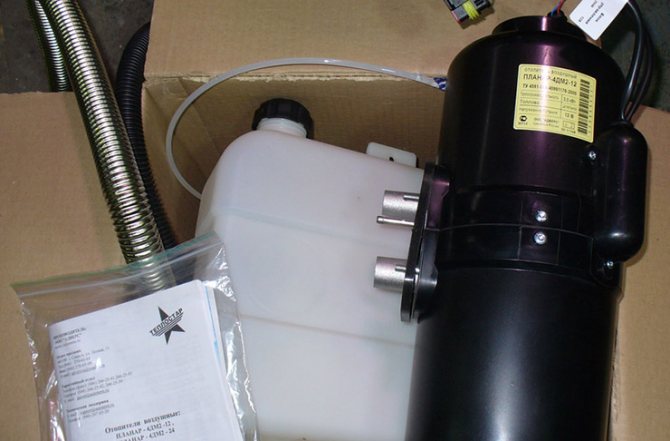

The planar consists of 3 main elements
To set a certain power, you need to fix a special regulator in a given position. After the vehicle owner selects the desired temperature, the heater will maintain it independently in autonomous mode.
The advantages of using air heaters:
- low cost;
- low fuel consumption;
- work is set by temperature or power;
- when the engine is off, very little electricity is consumed during long periods of inactivity of the machine;
- does not make a strong noise;
- due to the brushless motor, the service life is increased;
- design diagnostics is carried out automatically.
In this video you will learn how the heater works:
Principle of operation
The air heater is mounted in the engine compartment or in the passenger compartment. The device runs on diesel fuel, therefore, on vehicles with diesel power units, fuel can be drawn directly from the vehicle's tank. On cars with gasoline engines, it is necessary to mount a separate tank of 5-10 liters for the device to work. Power is supplied by connecting to the battery circuit.
For the operation of the electric motor of the device, air is also required, which is taken from the outside or through the air recirculation mode from the passenger compartment. Passing through the heat exchanger of the device, the air heats up and flows back into the passenger compartment. Thus, even before the engine is started and the standard heating system begins to work, the air temperature in the passenger compartment rises to acceptable values and is maintained in the future.

